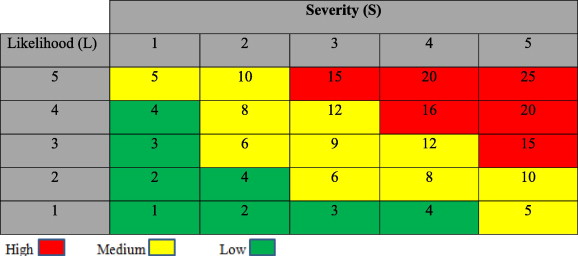When you run a small farm, no matter the size, you would do well to be aware of the possible risk factors and take the necessary steps to mitigate them.
Firstly, set your risk management priorities.
This is an easy one. The safety of yourself, your loved ones, friends, service providers and public has to be number one – always. Unfortunately, statistics show that people forget, are naïve or simply don’t think about the risks and possible consequences.
Why is safety risk priority No.1?
Farm accidents happen often and the consequences can be deadly.
As a generalisation: When we are young, we think we are indestructible and tend to go around the farm almost like a bull at a gate. There is always so much that needs to be done, right now. Then, when we are at a more advanced age (I’m lucky to be in this demographic), we can become blasé about actions we have been doing for years, while the body now also reacts slower to communication from the brain. There are risk factors at any age and with any type and size of farm.
Personally, I call myself a lucky farmer because after decades of farming, I’m still relatively fit and healthy, not to mention that I’m above the ground and not below it! There have however been numerous accidents that could have had disastrous consequences.
Examples of potential for accidents on small farms:
- bikes, tractors and other machinery, towing trailers (on & off road)
- working with stock – bulls/rams and cows protective of their calves, stock yards, horses
- unfenced dams and water – a real attraction (and danger) for kids
- tools, particularly power tools such as chainsaws, etc.
- chemicals
OK, I think we’ve established that farming life carries many safety risks. As a small farm owner, you have the choice: put your head in the sand and risk the possibly dire consequences, or identify and manage the potential risks.
While there is never any guarantee of 100% safety, you aim to have the odds well in your favour and do the best you can, by creating a risk management plan for your small farm.
KISS - Keep It Safe & Simple... to enjoy your farming experience
Setting up a Risk Management Plan in 4 steps
1. Research living and working on a farm safely
For example on the FarmSafe website.
2. Identify safety risks
Get a safety audit/assessment done on your farm and operations.
3. Prioritise the risks
A combination of likelihood and consequence (see graph below).

Source: https://safetyculture.com/topics/risk-assessment/5×5-risk-matrix/
Examples of incidents and where they rate on the likelihood/consequence scale:
- Quad bikes: Accidents happen often, with dire consequences – Extreme risk (20)
- Kicked by cow: Possible likelihood with usually minor to moderate consequences – Moderate to high risk (3-6)
- Tripping on a log: Quite possible to happen, usually with negligible consequences – Low risk (3)
4. Strategies to improve safety (likelihood & consequences) on your small farm
- Create, review and follow your safety plan(s).
- Communicate clearly with all stakeholders (including service providers and friends) in regard to safety.
- Endeavour to work when alert, in good light and not under stress.
- Always carry a charged mobile and have speed dial numbers.
- Always have vehicles, machinery, infrastructure, stock yards, tools, etc. in safe and fit-for-purpose working order.
- Always use prescribed safety equipment and have first aid kit(s) readily accessible.
- Having fit-for-purpose farm insurance will help to give you peace of mind when it comes to safety risk transfer on your small farm (for those risks or assets that can be insured). Some examples of insurance to consider are (not exhaustive): Farm Products and Public Liability, Workers Compensation, Life and/or Key Person, Fire, Storm and Accidental Damage (where offered)..
Get a quote today to see how Farmstyle Insurance can help protect your small farm.

ABOUT THE AUTHOR
Malcom Cock
Malcolm is the principal agricultural consultant at Farm Dynamics and grew up on and managed a bio dynamic dairy and beef farm in the Yarra Valley. He has been an agricultural consultant for over 30 years and holds a Diploma of Agriculture (TDA), Cert IV Workplace Assessment and Training. Certificate III in Frontline management.
